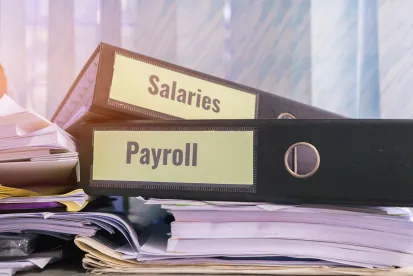Last week, the federal government implemented two measures designed to facilitate the financing of Paycheck Protection Program (“PPP”) loans through whole loan sales. These two measures fall on the heels of guidance issued by the Small Business Administration (“SBA”) the week earlier, partially lifting existing SBA restrictions on participation transactions involving PPP loans. See COVID-19 Update: The Paycheck Protection Program – Loan Participation Transactions.
As explained in our prior Clients & Friends Memos, PPP loans are a form of SBA Section 7(a) loan, a traditional form of SBA-guaranteed loan. Confusion has existed since the inception of the PPP due to the CARES Act’s statutory language and the effort to conform PPP loans to the existing 7(a) loan regulatory regime. Section 1102(a) of the CARES Act provides that PPP loans “shall be eligible to be sold in the secondary market consistent with this subsection.” This statement regarding sales in the secondary market was echoed in Treasury Department releases describing the PPP. “This subsection” refers to Section 7(a) of the Small Business Act.1 On April 17, the SBA and the Treasury Department issued an FAQ reaffirming that “A PPP loan may be sold into the secondary market at any time after the loan is fully disbursed” and that “A secondary market sale of a PPP loan does not require SBA approval.”2 Although not addressed in the CARES Act, the SBA’s existing regulations nonetheless impose some limitations on the ability of Section 7(a) loans to be transferred in the secondary market. With respect to whole loan sales, existing SBA Section 7(a) regulations require a prior approval for the sale of the loans, stipulate that such loans can be sold only to other SBA lenders, and allow such sales only if the selling lender has been determined by the SBA to meet certain good standing and performance criteria.3
The SBA’s Procedural Notice on Whole Loan Sales
In a Procedural Notice issued on May 1, 2020, the SBA announced that it was waiving certain of these requirements for whole loans sales.4 The Procedural Notice waives the prior approval requirement, instead requiring the originating PPP lender to provide after-the-fact written notice to the SBA’s Office of Credit Risk Management. The Notice deems all existing PPP lenders to satisfy the good standing and performance criteria applicable to sellers, but retains the requirement that PPP loans may be sold only to other SBA lenders (including lenders that have filed Forms 3506 or 3507 and therefore have the authority to originate PPP loans themselves). The Procedural Notice provides that the purchasing lender assumes responsibility for servicing, but can retain the originating lender as sub-servicer. Finally, the Notice states that “[t]he purchasing Lender acquires the PPP loan subject to SBA’s existing rights, including its right to deny liability on its guarantee.” This is consistent with the SBA’s longstanding position that a purchaser of SBA loans “will assume all of the obligations and responsibilities of the selling Lender, including but not limited to, all obligations, responsibilities and liabilities resulting from the making, servicing, closing and liquidation of the selling Lenders’ loans.”5
The Federal Reserve’s Revised PPPLF Term Sheet to Facilitate PPP Whole Loan Sales and Non-Depository Institution Pledges
Separately, the Board of Governors of the Federal Reserve System revised its term sheet governing the Paycheck Protection Program Loan Facility (“PPPLF”) to allow depository institutions to pledge purchased PPP loans, and to allow non-depository institution PPP lenders to pledge both originated and purchased PPP loans directly to the Federal Reserve.6 Previously, the PPPLF initial term sheet permitted depository institutions to pledge only those PPP loans originated by that depository institution, but did not allow the pledge of purchased PPP loans. The initial term sheet also advised that the Federal Reserve intended to allow non-depository institutions to pledge PPP loans to the Federal Reserve, but the term sheet provided no mechanism for doing so. As now revised, the PPPLF term sheet provides that (i) PPP lenders who are depository institutions should pledge PPP loans to their respective regional Federal Reserve Bank, (ii) PPP lenders who are community development financial institutions may pledge PPP loans to the Federal Reserve Bank of Boston, (iii) PPP lenders who are SBA-regulated “small business loan companies” or Farm Credit System members may pledge PPP loans to the Federal Reserve Bank of Minneapolis, and (iv) all other non-depository institution PPP lenders may pledge their loans to the Federal Reserve Bank of San Francisco. The Federal Reserve has now published the various documents that will be required for non-depository institutions to pledge their PPP loans.7
1 15 U.S.C. § 636.
2 Paycheck Protection Program Loans Frequently Asked Questions, FAQ #30 (Apr. 17, 2020), https://home.treasury.gov/system/files/136/Paycheck-Protection-Program-Frequently-Asked-Questions.pdf.
3 13 C.F.R. §§ 120.432(a) & 120.433.
4 https://www.sba.gov/sites/default/files/2020-05/5000-20024.pdf.
5 SBA Lender & Development Company Loan Program SOP 50-10-5(K) (Apr. 1, 2019), p. 257.
6 https://www.federalreserve.gov/newsevents/pressreleases/files/monetary20200430b1.pdf.
7 https://www.frbdiscountwindow.org/generalpages/nondi_ppplf.








 />i
/>i

